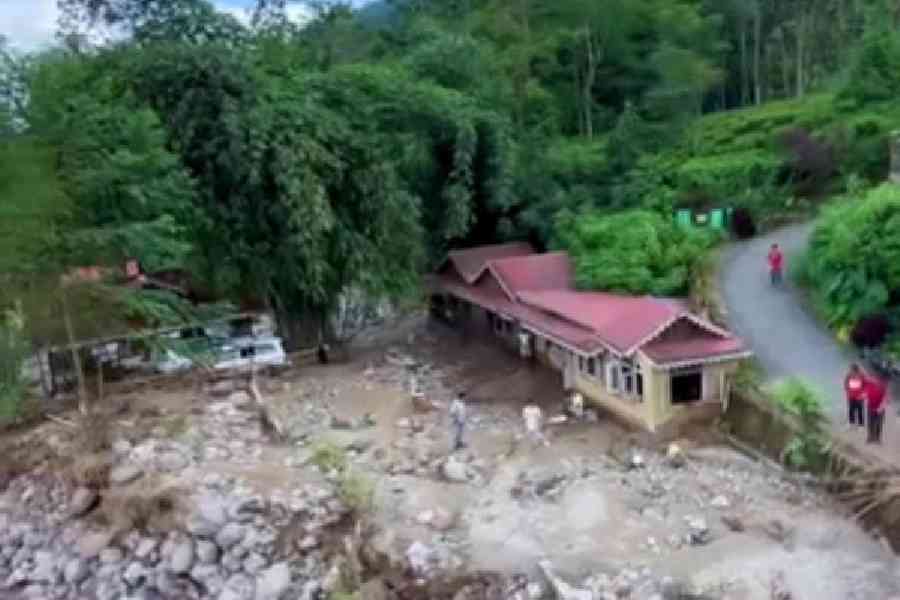A cyclonic circulation in combination with the southwest monsoon brought death and devastation through floods and landslides to the districts of Darjeeling, Jalpaiguri, Kalimpong and Alipurduar in North Bengal. Nearly 30 deaths have been reported: a further rise in the death toll cannot be ruled out. There has been extensive damage to infrastructure, with damages to key roads, inundation of wide stretches of land, and the collapse of bridges. Tourists have been stranded; the calamity has put a damper on the prospects of tourism during the festive season. Heavy rains that led to the swelling of rivers flowing into Alipurduar and Jalpaiguri also led to extensive damage in tea gardens. This will have adverse consequences for local livelihoods. The chief minister, Mamata Banerjee, who had been criticised for deciding to attend a Durga Puja carnival in Calcutta even as North Bengal was being lashed by calamity, has announced relief and compensation for the losses.
Ms Banerjee has described the disaster as a “man-made” calamity. The observation is warranted, but not in the way that she meant it. India’s Himalayan stretch — from Himachal Pradesh to Uttarakhand to West Bengal and Sikkim — has been particularly vulnerable to brisk but unsustainable development that has led to the mushrooming of not just hotels and highways but also hydropower projects and other such installations. Rising populations, an increasingly heavier burden of tourism, deforestation and shifting topography have joined hands with the other — existential — threat, climate change, to bring about periodic cataclysms. It is thus not a coincidence that several pockets in this geographical stretch have suffered natural turbulence in recent times. In fact, the Landslide Atlas of India, published by the Indian Space Research Organisation, had placed Darjeeling among the districts that are most exposed to such events. Institutional lacunae have further compounded the problems in these North Bengal districts. Most of the local bodies — panchayats, municipalities and even the Gorkhaland Territorial Administration — lack expertise and resources, including funds, technology and personnel, to manage disasters. Predictive technology can be improved upon as well. Extreme weather events are expected to become more frequent. Bengal and India must not only invest in resilient infrastructure, better disaster management and prediction abilities, regulation of tourism, greater public awareness but — this bears repetition — also put a stop to unsustainable development if they are to survive nature’s furies.











